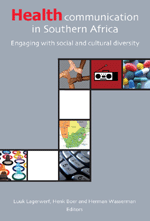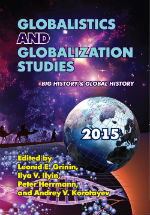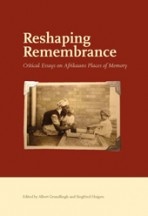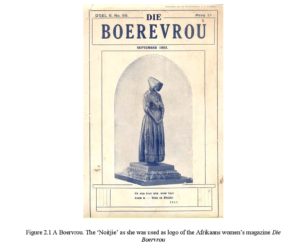- by: Tanja E. Bosch - University of Cape Town
 Abstract
Abstract
There is widespread global use of technology in medicine and health communication, leading to terms such as telemedicine, telehealth and e-health. A wide range of information and communication technologies (ICTs) is used both in the provision of services, as well as for messaging and communication campaigns. In South Africa, limited Internet penetration has led to increased experimentation with cell phones as a tool for social change. This paper provides a discussion of three of such projects: The Teen SMS Helpline of the South African Depression and Anxiety Group (SADAG); SIMPill which assists patients with compliance to their tuberculosis medication; and CellLife’s Cell phones for HIV programme. The projects are described, and the paper reflects on the general possibilities for using cell phones in healthcare, weighing advantages and disadvantages, particularly in the local South African context.
Introduction
The global trend of using new technologies in healthcare and health communication has made its way to Africa. A range of healthcare initiatives makes use of palm devices, the Internet, and other information and communication technologies, giving rise to the terms e-health, tele-health, and telemedicine (see Oh, Rizo, Enkin & Jada, 2005, for a literature review on the topic).
While the growing body of literature on this subject explores both the Internet and cell phones as ‘new’ media in the use of health promotion efforts, it is cell phones that are emerging as most popular, and possibly most effective, in health communication on the continent. Internet penetration in South Africa is increasing steadily, but the numbers of people with access to high-speed Internet connectivity here and elsewhere across Africa are probably still too low to allow the widespread success of Internet based applications, outside of telecentres set up specifically for this purpose. Recent statistics indicate that only one in 700 Africans has access to the Internet, versus one in four Europeans (Chakraborty, 2008).
On the other hand, the number of mobile subscribers in Africa has increased dramatically over the last few years. In 2007 Africa added over 60 million new
mobile subscribers and mobile phones represented 90 percent of all telephone subscribers (African Telecommunication/ICT Indicators, 2008). Indeed, cellphone penetration in Africa has increased rapidly since the privatisation of telephone monopolies in the mid-1990s (LaFraniere, 2005). Between 2000 and 2006, the total number of subscribers to cellphone services increased from 10 million to 110 million, in the 24 countries of sub-Saharan Africa, and South Africa had more subscribers to cell phones than fixed lines (Buys, Dasgupta, Thomas & Wheeler, 2008). Similarly, an earlier study revealed that the number of mobile subscribers in 30 Sub-Saharan countries rose from zero in 1994 to more than 82 million in late 2004 and the rate of growth for the entire continent has been more than 58 per year (Mbarika & Mbarika, 2006). Clearly, Sub-Saharan Africa is the world’s fastestgrowing wireless market and the rate of growth for the entire continent has been more than 58 per year (Mbarika & Mbarika, 2006). In South Africa, cellphone use is widespread, particular with the introduction of pre-paid services; and there are over 30 million users (Shackleton, 2007). Read more



- by: C.J. Polychroniou & Marcus Rolle

Malcolm Sawyer ~ Emeritus Professor of Economics. Leeds University Business School
More than a year ago, British voters sent waves of shock throughout Europe and the world economy with their decision to withdraw from the European Union (EU). However, the impact of Brexit on the UK’s economy and its implications for the future of the EU remain contested territory, especially since the conservative government of Theresa May has shown astonishing ineptness so far in terms of the conditions of the divorce. In this interview, well-known British economist Malcolm Sawyer of the University of Leeds provides an insightful analysis on the major issues and questions associated with Brexit, shedding light on what the future may hold for both the UK and the EU.
C.J. Polychroniou and Marcus Rolle: Britain’s decision last year to leave the European Union represents a shattering political development, the effects of which remain incalculable both for the future of the United Kingdom and for the EU itself. But before we explore the political economy of Brexit, let’s start by asking you to explain to us what you believe were the key factors that prompted British voters to seek a divorce from the European Union.
Malcolm Sawyer: The result of the referendum vote of June 2016 was close — 52 percent [voted] “leave EU” and 48 percent [voted] to remain. In any referendum (and indeed other elections), it is difficult [if not] impossible to discern what people thought they were voting for or against. In this referendum, whilst the consequences of a “remain” majority could be perceived as continuation with present arrangements, those of a “leave” majority were obscure — and indeed, the UK government is now grappling with working out what the consequences will be.
For those who voted for the UK to leave, my impressions are that the key factors include:
– The appeal of “take back control,” particularly with regard to immigration and the free movement of labor within the EU. Whilst there appear to be net economic benefits for the UK from immigration, there will be winners and losers, and people’s perceptions may often be of little or no benefits: added to which, hostility towards foreigners.
– The remoteness of the EU, often labelled in terms of “Brussels” with connotations that decisions of the EU were being imposed on the UK without input from the UK. This interacted with the “take back control” and could be stoked up by stories (often false) of decisions made by the EU.
– Disbelief that the UK’s membership of the EU brought economic benefits. The UK’s contribution to the EU budget (a net cost of around ½ percent of GDP) was apparent (though much overstated by the leave campaign), and the benefits for enhanced trade and cooperation much more nebulous. The remain campaign would cite 3 million jobs dependent on trade with EU (again overstated), but that would mean 27 million jobs were not dependent on such trade.
A breakdown of the vote revealed two fractures: a sharp division between young and old, and a huge gap between London and the North. What does the political economy have to do with these two fractures, and what sort of economic policies can be implemented in the future that can heal a divided nation?
The voting patterns with regard to remain/leave can be broken down along a number of lines — a tendency for large cities to vote remain (not just London), two countries voted to remain (Scotland, Northern Ireland) and two to leave (England, Wales). Having a university education tended to be associated with voting “remain,” and the old were much more likely than the young to vote leave (there being overlap between the two in that participation in higher education was much lower in the 1950s and 1960s than in the past two decades).
There appears to be association between socially conservative attitudes and voting leave. Areas of industrial decline appeared more likely to vote leave, [as did] areas where immigration had increased substantially in the past decade (noting that migration from other EU countries rose sharply after 2004 with the entry of the new member states in that year).
There is, in my view, a division between remain voters and leave voters running along the lines of “what matters to them.” A potent slogan of the leave campaign was “taking back control” — applied to immigration (as the free movement of labor places few constraints on migration within the EU), and to the role of [the] European Court of Justice, and more generally, to adoption of laws (though the impact of EU legislation on UK legislation was often grossly overstated by leave campaign), and to some degree, over regulations associated with the single market, and over policies, such as the common fishery policy.
The remain campaign focused on the adverse economic consequences of the UK leaving the EU, and failed to address the issues raised by the leave campaign in connection with “take back control.” Although large numbers were bandied about for the economic losses associated with leave, in proportional terms, the losses were relatively small (less than 5 percent of GDP over a 15-year period, and then as compared with what would have otherwise occurred). If a person’s concern is over perception of a loss of control, and striving to take “back control,” then some economic loss may well appear inconsequential. But also, the leave campaign’s slogan to the effect that £350 million a week (equivalent to around 1 percent of UK GDP) was the cost to the UK of EU’s membership, money which could be spent on the NHS, served as an antidote to the remain campaign’s claims over economic damage from leaving the EU. The £350 million per week claim was much derided as inaccurate, representing the gross payments by UK to the EU and ignoring the money flowing back to the UK for the agricultural support policy, regional and structural funds, and research moneys to universities.
Read more



- by: Leonid E. Grinin & Andrey V. Korotayev
 This article* studies the issue of democratization of countries within globalization context, it points to the unreasonably high economic and social costs of a rapid transition to democracy as a result of revolutions or of similar large-scale events for the countries unprepared for it. The authors believe that in a number of cases the authoritarian regimes turn out to be more effective in economic and social terms in comparison with emerging democracies especially of the revolutionary type, which are often incapable to insure social order and may have a swing to authoritarianism. Effective authoritarian regimes can also be a suitable form of a transition to efficient and stable democracy. The article investigates various correlations between revolutionary events and possibilities of establishing democracy in a society on the basis of the historical and contemporary examples as well as the recent events in Egypt. The authors demonstrate that one should take into account a country’s degree of sociopolitical and cultural preparedness for democratic institutions. In case of favorable background, revolutions can proceed smoothly (‘velvet revolutions’) with efficient outcomes. On the contrary, democracy is established with much difficulty, throwbacks, return to totalitarianism, and with outbreaks of violence and military takeovers in the countries with high illiteracy rate and rural population share, with low female status, with widespread religious fundamental ideology, where a substantial part of the population hardly ever hears of democracy while the liberal intellectuals idealize this form, where the opposing parties are not willing to respect the rules of democratic game when defeated at elections.
This article* studies the issue of democratization of countries within globalization context, it points to the unreasonably high economic and social costs of a rapid transition to democracy as a result of revolutions or of similar large-scale events for the countries unprepared for it. The authors believe that in a number of cases the authoritarian regimes turn out to be more effective in economic and social terms in comparison with emerging democracies especially of the revolutionary type, which are often incapable to insure social order and may have a swing to authoritarianism. Effective authoritarian regimes can also be a suitable form of a transition to efficient and stable democracy. The article investigates various correlations between revolutionary events and possibilities of establishing democracy in a society on the basis of the historical and contemporary examples as well as the recent events in Egypt. The authors demonstrate that one should take into account a country’s degree of sociopolitical and cultural preparedness for democratic institutions. In case of favorable background, revolutions can proceed smoothly (‘velvet revolutions’) with efficient outcomes. On the contrary, democracy is established with much difficulty, throwbacks, return to totalitarianism, and with outbreaks of violence and military takeovers in the countries with high illiteracy rate and rural population share, with low female status, with widespread religious fundamental ideology, where a substantial part of the population hardly ever hears of democracy while the liberal intellectuals idealize this form, where the opposing parties are not willing to respect the rules of democratic game when defeated at elections.
Keywords: globalization, Near East, Egypt, democracy, revolution, reaction, extremists, counterrevolution, Islamists, authoritarianism, excessive expectations, military takeover, economic efficiency.
Sociopolitical destabilization may be produced by rather different causes. However, sociopolitical transformations may be considered as ones of the most powerful among them. This may look paradoxical, but attempts of transition to democratic forms of government may lead to a very substantial destabilization of a society in transition. The present article analyzes the relationships between revolution, democracy and the level of stability in respective sociopolitical systems.
There is a widespread opinion that globalization contributes to the spread of democracy. Besides, there is a conviction, which is more widespread among the politicians and ideologists than among the scholars that democracy contributes to a faster and/or more adequate economic growth. The following quotation passionately expresses this conviction: ‘For the past three decades, globalization, human rights, and democracy have been marching forward together, haltingly, not always and everywhere in step, but in a way that unmistakably shows they are interconnected. By encouraging globalization in less developed countries, we not only help to raise growth rates and incomes, promote higher standards, and feed, clothe, and house the poor; we also spread political and civil freedoms’ (Griswold 2006).
In this context, many supporters of democracy consider extremely disappointing that sometimes democracy does not work properly and the waves of democratization get weaker. Samuel Huntington (1993) called the period of a fast spread of democracy in the 1970s – early 1990s ‘the third wave of democratization’. On the threshold of the twenty-first century, many researchers noted that the number of democratic regimes ceased to grow and that it would be a dangerous intellectual temptation for the democrats to consider that the world is inevitably moving towards some final natural democratic state (see Diamond 1999, 2004, 2008). In this situation, the trend has strengthened which promotes democracy in all countries with non-democratic or partially democratic regimes. This trend, on the one hand, is based on the global geopolitical goals of the USA and the West (see, e.g., Brzezinski 1998), and on the other hand, relies upon an active support of a broad ideological and informal movement. And this justifies the efforts to support democracy and to encourage democratic opposition for the purpose of increasing chances of victory of democracy in case of the crisis of authoritarian regimes (Diamond 2000). The intensive efforts led to a number of interventions and color revolutions. Read more



- by: Albert Grundlingh & Siegfried Huigen (Eds.)

Albert Grundlingh & Siegfried Huigen (Eds.) – Reshaping Remembrance. Critical Essays on Afrikaans Places of Memory – Rozenberg Publishers 2011 – Savusa Series 3 – ISBN 978 90 3610 230 8 – Editing: Sabine Plantevin.
In any society in the throes of transition, there is a particularly acute need to reflect upon aspects of the past that used to represent firm beacons enlighting the way ahead. This inevitably involves a broader re-appraisal of the processes which contributed to the formation of a specific historical memory in the first place.
Reshaping Remembrance includes a number of critical essays on dimensions of collective Afrikaans historical memory in South Africa. In the light of radical changes in the country, scholars from various disciplines reflect on the dynamics of historical consciousness symbolically present in various areas: the ‘volksmoeder’ image, historical events and monuments, language and music, rugby and architecture.
This work hopes to resound with a well-established intellectual tradition in Europe dealing with ‘places of memory’ or ‘lieux de mémoire’.
Contents
1. Siegfried Huigen & Albert Grundlingh – Koos Kombuis and Collective Memory
2. Elsabé Brink – The ‘Volksmoeder’ – A Figurine as Figurehead
3. Gerrit Olivier – The Location
4. Hein Willemse – A Coloured Expert’s Coloured
5. Kees van der Waal – Bantu: From Abantu to Ubuntu
6. Ena Jansen – Thandi, Katrina, Meisie, Maria, ou-Johanna, Christina, ou-Lina,Jane and Cecilia
7. Albert Grundlingh – Rugby
8. Marlene van Niekerk – The Eating Afrikaner: Notes for a Concise Typology
9. Lizette Grobler – The Windpump
10. Hans Fransen – Glorious Gables
11. Lou-Marié Kruger – Memories of Heroines: Bitter Cups and Sourdough
12. Lize van Robbroeck – The Voortrekker in Search of New Horizons
13. Christine Antonissen – English
14. Siegfried Huigen – Language Monuments
15. Rufus Gouws – The Woordeboek van die Afrikaanse Taal
16. Luc Renders – And the Greatest is … N.P.van Wyk Louw
17. Albert Grundlingh – Why have a Ghost as a Leader? The ‘De la Rey’ Phenomenon and the Re-Invention of Memories, 2006-2007
18. Stephanus Muller – Boeremusiek
19. Stephanus Muller – Die Stem
20. Annie Klopper – ‘In ferocious anger I bit the hand that controls’: The Rise of Afrikaans Punk Rock Music
Read more
- by: Siegfried Huigen & Albert Grundlingh
 As the year 2006 gave way to 2007, a song and an accompanying music video about the Boer general Koos de la Rey caused quite a stir in South Africa. When this song was played in bars and at barbecues, young white Afrikaners would stand with their fists clenched against their chests and sing along: ’De la Rey, De la Rey…’ And tears would flow. According to news reports, the ‘De la Rey thing’ had made many of them ‘proud’ of their roots. Worried ANC politicians expressed concern because they saw this as the start of an ethnic revival that could disrupt South Africa. The phenomenon even made it to the world press.
As the year 2006 gave way to 2007, a song and an accompanying music video about the Boer general Koos de la Rey caused quite a stir in South Africa. When this song was played in bars and at barbecues, young white Afrikaners would stand with their fists clenched against their chests and sing along: ’De la Rey, De la Rey…’ And tears would flow. According to news reports, the ‘De la Rey thing’ had made many of them ‘proud’ of their roots. Worried ANC politicians expressed concern because they saw this as the start of an ethnic revival that could disrupt South Africa. The phenomenon even made it to the world press.
One of the more balanced reactions to the De la Rey song is an article by the Afrikaans beat poet Koos Kombuis on Litnet, ‘Bok van Blerk en die bagasie van veertig jaar’ (Bok van Blerk and the baggage of forty years).[i] In this article Kombuis confesses his conflicting reactions to the song. Rationally, he rejects the song and the Boer War elements in the music video. He sees it as ‘a call to war, a sort of musical closing of the ranks’. Some months before Kombuis had distanced himself publicly from his Afrikaner identity in a Sunday newspaper, from the ‘baggage that has been forced on me by people who have now been trying to prescribe for forty years who and what an Afrikaner is. What an Afrikaner is supposed to believe in. Whom he should vote for, which shit clothes he should wear and how he should spend his public holidays’.[ii] This notwithstanding, Kombuis is unable to offer any resistance to the emotional appeal of the song: ‘Why, if I experienced my resignation from Afrikanerdom as such a gloriously liberating step, do I feel so inexplicably profoundly touched by the De la Rey song? It is embarrassing’.
In reply to Kombuis’s question ‘why’, it can be surmised that both the song and the video, with their images of the leadership, a concentration camp and Boer fighters, draw on the collective memory of white Afrikaners, on something they learned within the family and, especially for the older ones, at school and in church. Kombuis’s reaction already points in this direction when he says that when he hears the song, he longs to be back at Sunday school and ‘feels like rejoining the army on the spot and shooting the hell out of the Kakies and other K stuff’.[iii]
The role of collective memories was first investigated seriously by the French sociologist Maurice Halbwachs in his ground-breaking works Les cadres sociaux de la mémoire (The social frameworks of memory) and La mémoire collective (The collective memory). These publications from 1925 and 1950 were rediscovered in recent years by historians doing research on memory. According to Halbwachs, every one of us obviously has his own memories, but at the same time we also share group memories. Read more



 The ‘Volksmoeder’ is the Afrikaans manifestation of the universal Mother of the Nation phenomenon. In South Africa she cuts a fine, statuesque figure; she is a figurehead, a figure of speech, an idealised figure of womanhood as well as a petite bronze figurine. During the course of the twentieth century this figurine became a figurehead which marshalled Afrikaner women and girls to commit themselves in the service of their families and their ‘volk’ – a nation in the making. With this call to arms, the Volksmoeder was appropriated as an evocative and emotionally laden site of memory to which several generations of Afrikaner women readily responded.
The ‘Volksmoeder’ is the Afrikaans manifestation of the universal Mother of the Nation phenomenon. In South Africa she cuts a fine, statuesque figure; she is a figurehead, a figure of speech, an idealised figure of womanhood as well as a petite bronze figurine. During the course of the twentieth century this figurine became a figurehead which marshalled Afrikaner women and girls to commit themselves in the service of their families and their ‘volk’ – a nation in the making. With this call to arms, the Volksmoeder was appropriated as an evocative and emotionally laden site of memory to which several generations of Afrikaner women readily responded.
As a site of memory, the bronze figurine of the Volksmoeder still carries her years well even now in the early 21st century. One of about twenty copies of the Afrikaans sculptor Anton van Wouw’s 1907 figurine ‘Nointjie van die Onderveld, Transvaal, Rustenburg, sijn distrikt’ (Maiden from the Upcountry, Transvaal, Rustenburg district) has found a home on my bookshelf. This little Volksmoeder – rather a petite girl – has a round face, a fine, sharp little nose, downcast eyes, a tiny mouth and a somewhat cheeky fringe escaping from her bonnet. Her small shoulders are pulled downwards under the weight of her shawl and her hands are neatly clasped in front of her. At barely 40cm she resembles a fourteenth century Virgin Mary, with eyes submissively downcast, waiting pensively, patiently, politely and passively to be dusted. She is the visual shorthand of the ‘nobility and the beauty of the young Afrikaans girl which should inspire many to simplicity and greater spirituality’.[i]

Figure 2.1 A Boervrou. The ‘Noitjie’ as she was used as logo of the Afrikaans women’s magazine Die Boervrou
Between 1919 and 1932, this figurine became the trademark of the first successful and widely read Afrikaans women’s magazine Die Boerevrou, and a symbol of the idealised Afrikaner woman and of national motherhood.[ii] The motto of the magazine, an extract from a poem by the Afrikaans writer Jan F.E. Celliers – which goes, ‘I see her triumph, for her name is – Wife and Mother’, complemented the visual message that the figure was fragile yet strong, and could and would emerge triumphant in the face of adversity.
Seen against the background of the trauma of the Anglo-Boer War (1899-1902), of the great loss of life of women and children, as well as of the material destruction of the rural areas, Celliers’ triumphant woman makes sense. Women needed the encouragement and reassurance that they would be able to overcome the dire post-war conditions.
Like Celliers, his poetic counterpart, Van Wouw was intimately involved in the postwar project of visualising the Volksmoeders as ultimate victors in the struggle for life and survival. In a vein similar to his figurine’s, Van Wouw’s 1913 majestic group of three women in bronze at the Women’s Memorial in Bloemfontein, commemorating the suffering of women and children during the Anglo-Boer War (1899-1902), depicts Afrikaans women as patient and long-suffering Volksmoeders. Larger than life, elevated on a podium at the base of a sandstone obelisk, they transcend the death and suffering commemorated by the Memorial. They survey the landscape and the future, fully conscious of their assigned calling to struggle on behalf of the nation. Rather than remaining victims of war, women’s dignity and worth needed to be restored by portraying them as heroines who made great sacrifices at the altar of the nation. In this manner, an attempt was made to deal with the trauma of war and the huge loss of civilian life, especially that of children.[iii] The Boer woman needed to be reassured that despite the grievous loss of her children she remained a good wife and mother, and that indeed she was the mother of the future nation. The Federasie van Afrikaanse Kultuurverenigings (Federation of Afrikaans Cultural Organisations (FAK)) contended:
‘Despite the humiliation, the wretchedness and suffering, she keeps her head held high as if she sees the unseen – the resurrection of her nation’.[iv] During the first half of the twentieth century the Volksmoeder became an important component in the propaganda arsenal of Afrikaner nationalism. The formal description – her verbal image – appeared just after the Afrikaner Rebellion (1914) and the end of the First World War (1914-1918). In 1918, the women of the Free State Helpmekaar Kultuur Vereniging, (Free State Mutual Aid and Cultural Society) commissioned Dr Willem Postma (aka ‘Dr Okulis’ – Oculis) to write a book Die Boervrou, Moeder van haar Volk (The Boer Woman – Mother of her Nation). His description of the Volksmoeder is closely correlated with the visual representation of both the figurine and the bronze composition at the Women’s Memorial in Bloemfontein. He echoes the need to provide reassurance and positive reinforcement to the Boer woman:
We need not feel shame for the Boer woman. We have every reason to honour and love her. No better, more noble mother than the Mother of the Boer Nation has in a more complete and richer sense ever nurtured a nation. Her history, her life is beauteous, pure, honest and dignified.[v]
Read more







